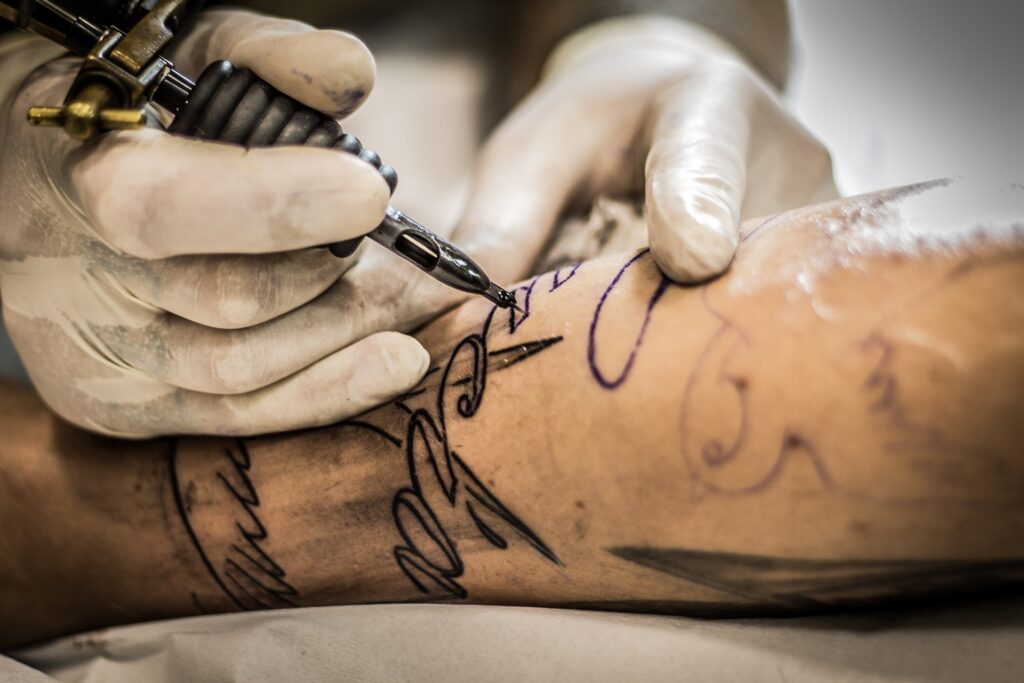Laser Tattoo Removal
Introduction
Various tools have been used to remove tattoos since the earliest days of tattooing. Even though tattoos are traditionally fixed, it has become feasible to erase them whole or in part with procedures.
What is Laser Tattoo Removal?
As a rule, lasers are used to remove tattoos as these can break down ink particles into smaller ones. As part of the body’s defense mechanism, macrophages are responsible for removing and assimilating cell components from the surface of the skin. Phagocytes collect tattoo ink but have a hard time breaking it down. It is the case with macrophages. Rather, the pigments are kept in a separate area. Whenever an organism is compromised, it discharges its ink, which other macrophages consume. As a result, getting rid of tattoos can be particularly difficult. When ink particles are broken down into tiny chunks, phagocytes can remove them more easily.
The light absorption spectrum of tattoo pigments is unique. For a tattoo laser to be effective, it must emit sufficient energy within the pigment’s absorption spectrum. It is hard to remove definite tattoo colorants, such as orange and luminescent inks because they have spectral responses that fall in front or on the corner of the emission lines available in a tattoo removal laser’s wavelength range. Titanium dioxide, a highly reflective pigment, is used in many new pastel-colored inks. Inks that represent a considerable amount of light away from the skin are thus hard to extract.
What Procedures are there?
The technique of removing a tattoo will vary depending on the type of drawing and the person who is getting it Removed. Even though the specific number of individuals needed to consider removing the tattoo could be anticipated in advance, most people will require several sessions ranging from one to three months apart. The size, color, location, and age of the tattoo all play a role in the variation. In addition, Laser tattoo removal has improved over the years due to advances in technology that have increased its efficacy while decreasing the likelihood of side effects.
Given this, when a person decides to remove a tattoo from their own body, they may have many reasons for doing so. Remorse or displeasure with the tattoo’s appearance is two possibilities. Because tattoos are associated with a lack of professionalism in the workplace, some people choose to remove them to improve their earning potential.
Only Light: No Syringe or Razor Required
Laser therapy includes only focused light without the use of syringes, blades, and any other tools. We use powerful light to smash your undesired print particles into shreds. Even though undetectable, the tattoo disappears more and more with each cure.
Are There Any Colors That Laser Tattoo Removal Doesn’t Work On?
Different pigments are affected differently by the laser because it is essentially a concentrated beam of light. Laser light is reflected more strongly by pigments that are sunnier in color, reducing the laser’s ability to break up the ink with Pigments of that color. Generally, these shades tend to be fluorescent and thus absorb almost no illumination from the laser power. Although a laser is Useful to remove these tattoos, it may require extensive treatments compared to other pigments for which the laser is more effective. Moreover, for the removal of the tattoo with a laser, there must be some risk involved.
Laser Tattoo Removal: A Tough Process
People with darker skin and those who want to consider removing a color tattoo may find it difficult to erase their tattoos deeply. After laser treatment, some people may notice changes in their skin’s texture or color.
The people who go through laser tattoo removal require a sequence of cosmetic procedures to vanish their tattoos. As a result, it raises the risk of laser-related complications because of the increased exposure to light. In addition, the treatment regimen can quickly spiral out of control financially. In addition to being painful, the operation could also be unpleasant for the patient and cause them to experience discomfort in the area being treated. Before treatment, a local anesthetic injection may be given to minimize this risk. In addition, laser light does have the potential to cause eye damage and impair eyesight. Because of this, everyone must wear their safety goggles.
Finally, laser tattoo removal can cause skin infections, specifically if an area of treatment has been overlooked. Because of the risk of infection, patients should safeguard the part of the body that has been treated. It necessitates the need for adequate post-treatment treatment.
How to Minimize the Chances of Failure
For maximizing the chances of success of laser tattoo removal, proper post-treatment care is essential. In the Days immediately following the procedure, it is necessary to keep the skin hydrated by cleaning it properly. Moisturizers can benefit from petrolatum-based ointments, which can aid in the healing process. The aseptic tourniquet should be applied to the area for at least a week just after each workout. To remove your tattoo, you may want to think about using laser tattoo removal, it would lead us to its best option just for you!
Laser Tattoo Removal may be the Best Option for You
When it comes to successfully getting rid of that old tattoo, laser treatment may be the best choice for you if you are as determined as you were to get it in the first place. Laser treatments, which have been safely and effectively used for years, use focused illumination to disintegrate undesired ink particles into smaller sizes, so that the skin can Normally wash them down immediately.
Conclusion
Do you seem wary of picking your outfits based on the fact that you don’t want to show off that uncomfortable tattoo you got countless years back? When it comes to getting rid of undesired prints, laser removal may be the best alternative.
There are many options available after you’ve decided that laser removal is the best way to get rid of your undesired tattoo. Why not find a trustworthy, knowledgeable who can help you get the most out of your therapy.


